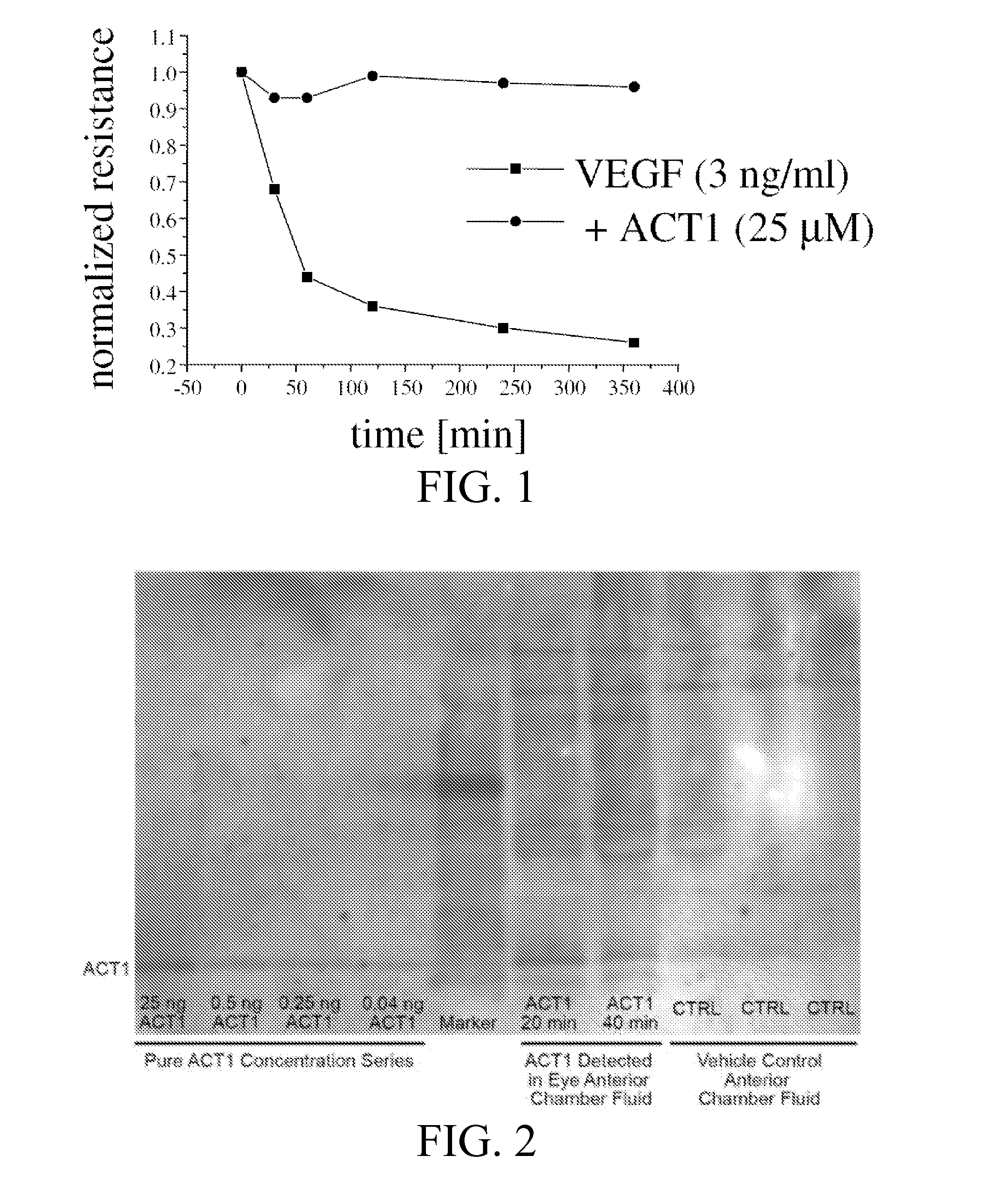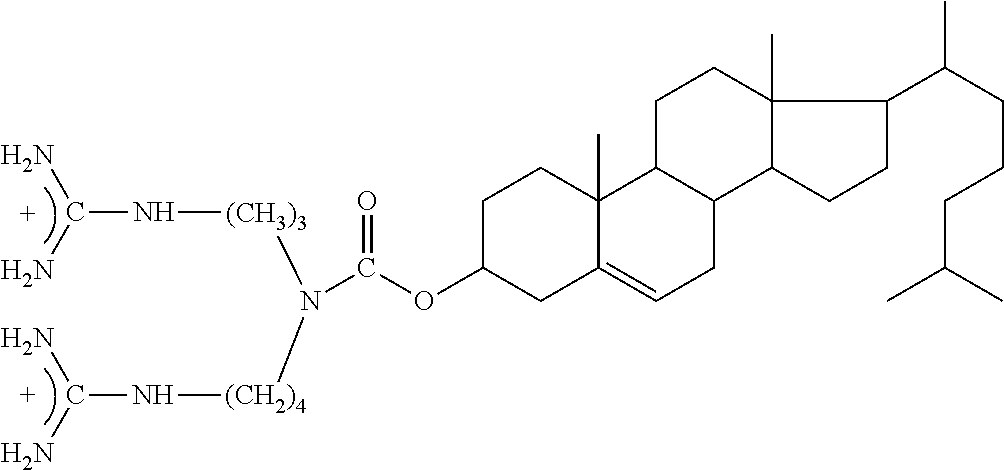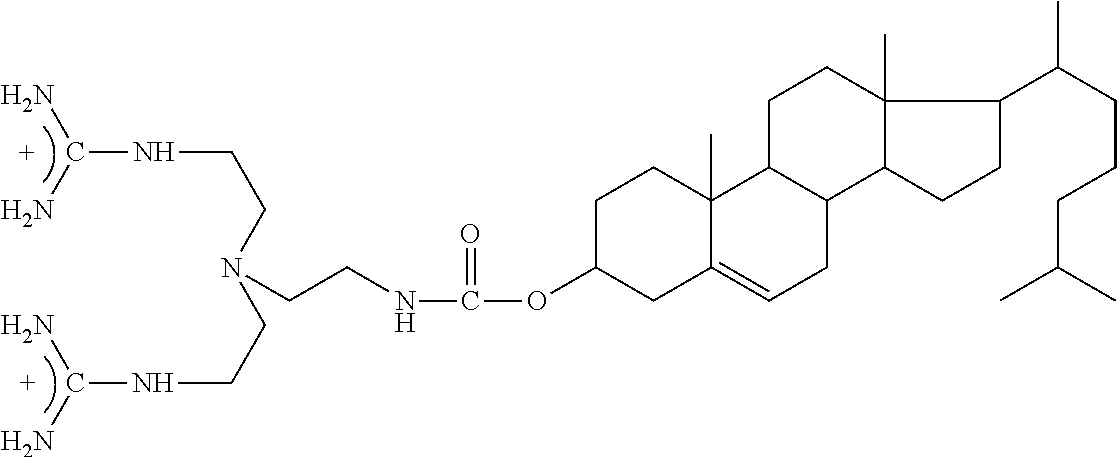Alpha connexin c-terminal (ACT) peptides for treating age-related macular degeneration
a technology of c-terminal and c-terminal, which is applied in the direction of peptide/protein ingredients, drug compositions, cardiovascular disorders, etc., can solve the problems of blood and protein leakage below the macula, loss of central vision, and inability to see fine details, read, or recognize faces
- Summary
- Abstract
- Description
- Claims
- Application Information
AI Technical Summary
Benefits of technology
Problems solved by technology
Method used
Image
Examples
example 1
1. Example 1
[0236]As shown in FIG. 1, the alpha connexin carboxy-terminal (ACT) polypeptide ACT1 prevents VEGF-induced deterioration of TER in ARPE-19 cells. Trans-epithelial resistance (TER) measurements, using ARPE19 cell (immortalized human RPE cells) monolayers revealed that VEGF leads to rapid deterioration, which was blocked by pre-treating the cells with the ACT peptide. Thus, while not wishing to be bound by theory, stabilizing the tight junction proteins with the ACT peptide can prevent loss of tight-junction disintegration and thus damage to RPE / Bruch's membrane.
[0237]ACT1 Peptide contains an amino terminal cell internalization sequence. Together with a mild detergent that is used in ocular applications, Brij-78 the antenapedia sequence assists in permeation of ACT1 into interior fluids and tissues of the eye. In some aspects, the ability of ACT1 to enter the internal fluids and tissues of eye is a mode of action of ACT1 in treating diseases of the eye such as macular dege...
PUM
| Property | Measurement | Unit |
|---|---|---|
| weight | aaaaa | aaaaa |
| concentration | aaaaa | aaaaa |
| compositions | aaaaa | aaaaa |
Abstract
Description
Claims
Application Information
 Login to View More
Login to View More - R&D
- Intellectual Property
- Life Sciences
- Materials
- Tech Scout
- Unparalleled Data Quality
- Higher Quality Content
- 60% Fewer Hallucinations
Browse by: Latest US Patents, China's latest patents, Technical Efficacy Thesaurus, Application Domain, Technology Topic, Popular Technical Reports.
© 2025 PatSnap. All rights reserved.Legal|Privacy policy|Modern Slavery Act Transparency Statement|Sitemap|About US| Contact US: help@patsnap.com



